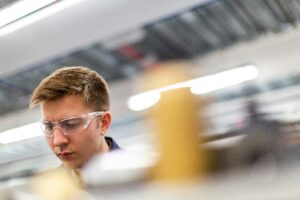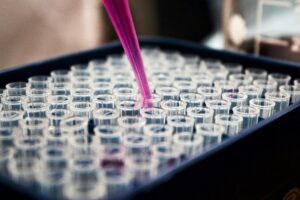Why it is important to be able to perform chemical measurements in a lower wavelength?
Performing chemical measurements in lower wavelengths allows for greater specificity in identifying different chemical compounds. This is because different chemicals have distinct absorption or emission spectra at different wavelengths, so measuring at a specific wavelength can reveal the presence of a specific compound. Additionally, lower wavelength measurements, such as those in the ultraviolet and visible regions, can also provide information about the electronic structure of a compound, which can be useful for understanding its reactivity and other properties.
Specific identification of different chemical compounds
Ultraviolet (UV) detection is an essential technique in chemical analysis because it allows for the specific identification of different chemical compounds. This is due to the fact that each chemical compound has a unique absorption or emission spectrum at different wavelengths, and measuring at a specific wavelength can reveal the presence of a specific compound.
One of the key advantages of UV detection is its ability to detect small amounts of a compound, known as trace analysis. This is important in many fields, such as environmental monitoring, where small amounts of pollutants need to be detected and quantified. UV detection can also be used to identify unknown compounds by comparing their absorption or emission spectra to known compounds.
Another important application of UV detection is in the field of biochemistry, where it is used to study the structure and function of biomolecules such as proteins and nucleic acids. UV detection can provide information about the secondary structure of proteins and the conformation of nucleic acids, which can be useful for understanding their function and interactions with other molecules. UV detection is also important in the field of pharmaceuticals, where it is used to identify and quantify active ingredients in drugs. This is crucial for ensuring the safety and efficacy of medications, as well as for detecting counterfeit drugs.
UV detection has many application industries
Another important application of UV detection is in the field of food and beverage analysis. UV detection is often used to measure the purity and concentration of ingredients such as sugar, amino acids and vitamins. This is important for ensuring food safety, quality and compliance with regulations. UV detection can also be used to detect contaminants such as heavy metals and pesticides, which is crucial for public health. UV detection is also used in industrial settings for process control and monitoring. It can be used to measure the concentration of chemicals in a process stream, which is important for ensuring efficient production and compliance with environmental regulations. Additionally, UV detection can be used for quality control in the production of industrial products, such as pigments, dyes and other materials.

In addition to its specific identification capabilities, UV detection can also provide information about the electronic structure of a compound. This can be useful for understanding its reactivity and other properties, which can be important in fields such as materials science and catalysis. UV detection is an important technique in chemical analysis due to its ability to specifically identify and quantify a wide range of compounds. Its ability to detect small amounts of compounds, identify unknown compounds, and provide information about the electronic structure of a compound make it a valuable tool in many fields such as environmental monitoring, biochemistry, pharmaceuticals, and materials science.
In recent years, portable UV detection devices have become increasingly popular, providing the ability to perform on-site chemical analysis. To learn more about a system like this, see the details of LABIO GC-UV INSCAN™. This is particularly useful in fields such as environmental monitoring, industrial process control, and food and beverage analysis, where rapid, accurate results are needed. Portable UV detection devices can also be used in remote or inaccessible locations, where traditional laboratory equipment is not feasible.
In conclusion, UV detection is a versatile and powerful technique that is widely used in many fields. Its ability to detect small amounts of specific compounds, identify unknown compounds, and provide information about the electronic structure of a compound make it a valuable tool for understanding the properties and interactions of chemicals. UV detection is essential for ensuring safety, quality and compliance in fields such as environmental monitoring, biochemistry, pharmaceuticals, food and beverage, and industrial process control. Portable UV detection devices have made it even more accessible, providing the ability to perform on-site chemical analysis in remote or inaccessible locations.
LABIO combines Gas Chromatography with UV detection
UV detection can be coupled with other analytical techniques to provide even greater specificity and sensitivity in chemical analysis, making it an essential tool for understanding the properties and interactions of chemicals.
Overall, UV detection is an important tool in chemical analysis because of its ability to detect small amounts of specific compounds, identify unknown compounds, and provide information about the electronic structure of a compound. This information can be crucial for understanding the properties and interactions of chemicals in a wide range of fields, including environmental monitoring, biochemistry, pharmaceuticals, and materials science.




